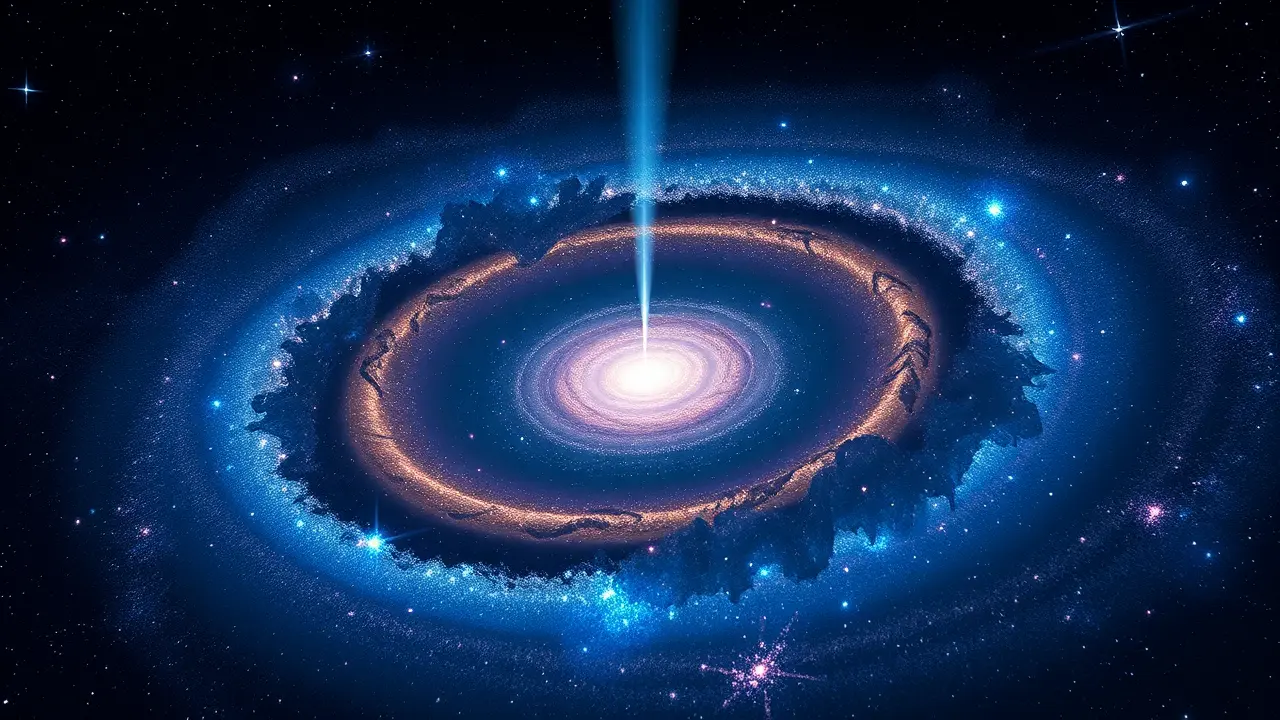
Sciencespace & astronomyAstrophysics Discoveries
Dark matter may be lighting up the heart of the Milky Way
TH
Thomas Green
12 hours ago7 min read2 comments
Peering into the heart of our galaxy has long presented astronomers with a tantalizing enigma: a persistent, unexplained gamma-ray glow emanating from the Milky Way's core. For years, the leading explanation pointed to a dense population of pulsars—the rapidly spinning corpses of dead stars—as the culprits.But now, a groundbreaking shift is underway, propelled by sophisticated new simulations that suggest we may have been overlooking a far more fundamental, albeit invisible, architect of this cosmic light show: dark matter. Researchers are proposing that the very fabric of our galaxy's dark matter halo has been sculpted and distorted by the violent gravitational ballet of past galactic collisions, fundamentally reshaping its core in a way that could naturally produce the exact gamma-ray signature we observe.This revelation, emerging from complex computational models that trace the Milky Way's tumultuous history of merging with smaller dwarf galaxies, revives dark matter as the prime suspect in one of modern astronomy's most enduring mysteries. The conventional particle physics candidate for dark matter, the weakly interacting massive particle or WIMP, theoretically annihilates when it collides with its antimatter counterpart, a process that would release a burst of energy manifesting as gamma radiation.The challenge has always been that the observed signal from the galactic center was both too smooth and too bright to be easily explained by known astrophysical sources alone, creating a perfect storm of scientific debate. These new simulations demonstrate that if the dark matter distribution is not a simple, spherical cloud but is instead stretched and compressed into a elongated, bar-like structure—a direct consequence of gravitational shocks from ancient mergers—the rate of these annihilation events would be dramatically enhanced in the galactic center, producing a glow that perfectly mimics the one that has puzzled scientists for over a decade.This isn't merely a tweak to an old idea; it's a paradigm shift that recontextualizes the entire investigation, moving the discussion from 'is it pulsars or dark matter?' to 'how does the dynamic history of our galaxy illuminate the properties of its most dominant yet elusive component?'. The implications are profound, stretching beyond the confines of our own galaxy.If confirmed, this model would provide the first indirect but highly compelling evidence for the particle nature of dark matter, offering a crucial piece to the puzzle that constitutes 85% of the universe's mass. It sets the stage for a new era of multi-messenger astronomy, where data from gamma-ray telescopes like the Fermi Large Area Telescope must be cross-referenced with ever-more-detailed maps of the Milky Way's stellar streams and halo structure from missions like Gaia.The coming years will be decisive, as next-generation instruments, including the Cherenkov Telescope Array, will possess the sensitivity to distinguish subtle irregularities in the gamma-ray signal that would be the smoking gun for a dark matter origin versus a pulsar population. This research bridges the gap between cosmology and galactic archaeology, suggesting that to understand the universe's hidden mass, we must first understand the violent, collisional history that has shaped the galaxies we see today. The dark, silent heart of the Milky Way may finally be speaking to us, not in the radio pulses of dead stars, but in the faint, high-energy whisper of matter itself being unmade.
#featured
#dark matter
#Milky Way
#gamma-ray glow
#pulsars
#galactic center
#simulations
#research
Stay Informed. Act Smarter.
Get weekly highlights, major headlines, and expert insights — then put your knowledge to work in our live prediction markets.
Related News
© 2025 Outpoll Service LTD. All rights reserved.
